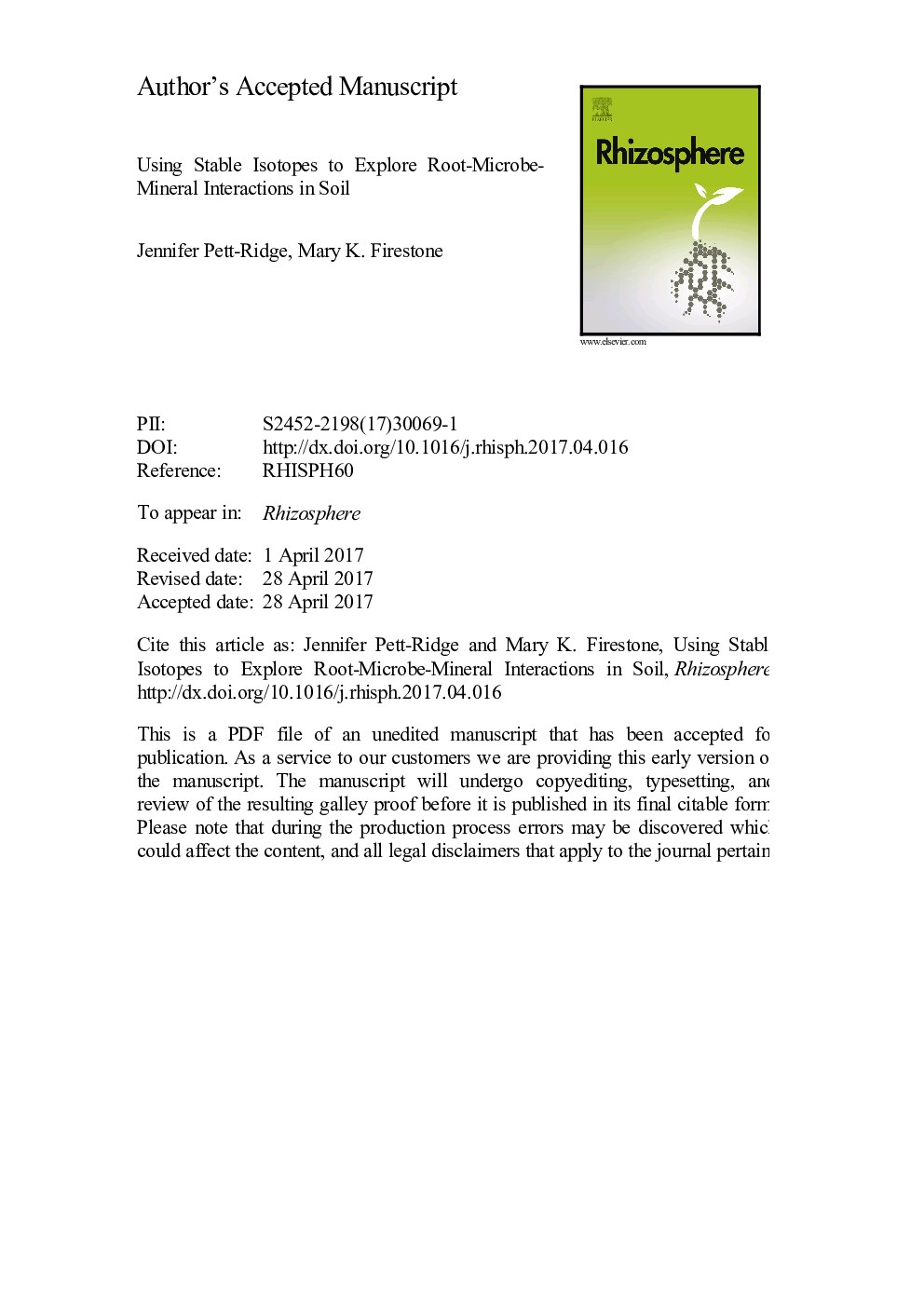| کد مقاله | کد نشریه | سال انتشار | مقاله انگلیسی | نسخه تمام متن |
|---|---|---|---|---|
| 5762824 | 1412949 | 2017 | 39 صفحه PDF | دانلود رایگان |
عنوان انگلیسی مقاله ISI
Using stable isotopes to explore root-microbe-mineral interactions in soil
ترجمه فارسی عنوان
استفاده از ایزوتوپ های پایدار برای بررسی اثرات متقابل ریشه-میکروب های معدنی در خاک
دانلود مقاله + سفارش ترجمه
دانلود مقاله ISI انگلیسی
رایگان برای ایرانیان
کلمات کلیدی
موضوعات مرتبط
علوم زیستی و بیوفناوری
علوم کشاورزی و بیولوژیک
علوم زراعت و اصلاح نباتات
چکیده انگلیسی
The few millimeters of soil surrounding a plant's roots, the 'rhizosphere', are a nexus of biological activity, and inhabited by microorganisms that are critically important to both plant health and soil carbon (C) transformation and stabilization. Advancing our understanding of plant-microbe interactions and the soil carbon cycle requires disentangling the complex relationships among roots, soil microbes, mycorrhizae, and soil mineral surfaces. Yet in wildland systems, many important mechanistic rhizosphere questions remain unanswered. For example, most root C is decomposed to CO2, but of the remainder, what microbial transformations lead to the opportunity to become stabilized? How do plant species and microbial functionality regulate flows of C and nutrients, and how much do these vary over space and time? Transfer of root carbon to bacterial and fungal cell biomass may be a particularly important activity that precedes C stabilization on mineral surfaces, but the steps involved in this process remain ambiguous. In the past decade, multiple 'isotope-enabled' approaches have been developed that allow us to see and measure these complex rhizosphere interactions with high spatial, chemical, and molecular resolution. Here we present illustrative examples of these approaches as applied in non-cultivated soil systems.
ناشر
Database: Elsevier - ScienceDirect (ساینس دایرکت)
Journal: Rhizosphere - Volume 3, Part 2, June 2017, Pages 244-253
Journal: Rhizosphere - Volume 3, Part 2, June 2017, Pages 244-253
نویسندگان
Jennifer Pett-Ridge, Mary K. Firestone,
